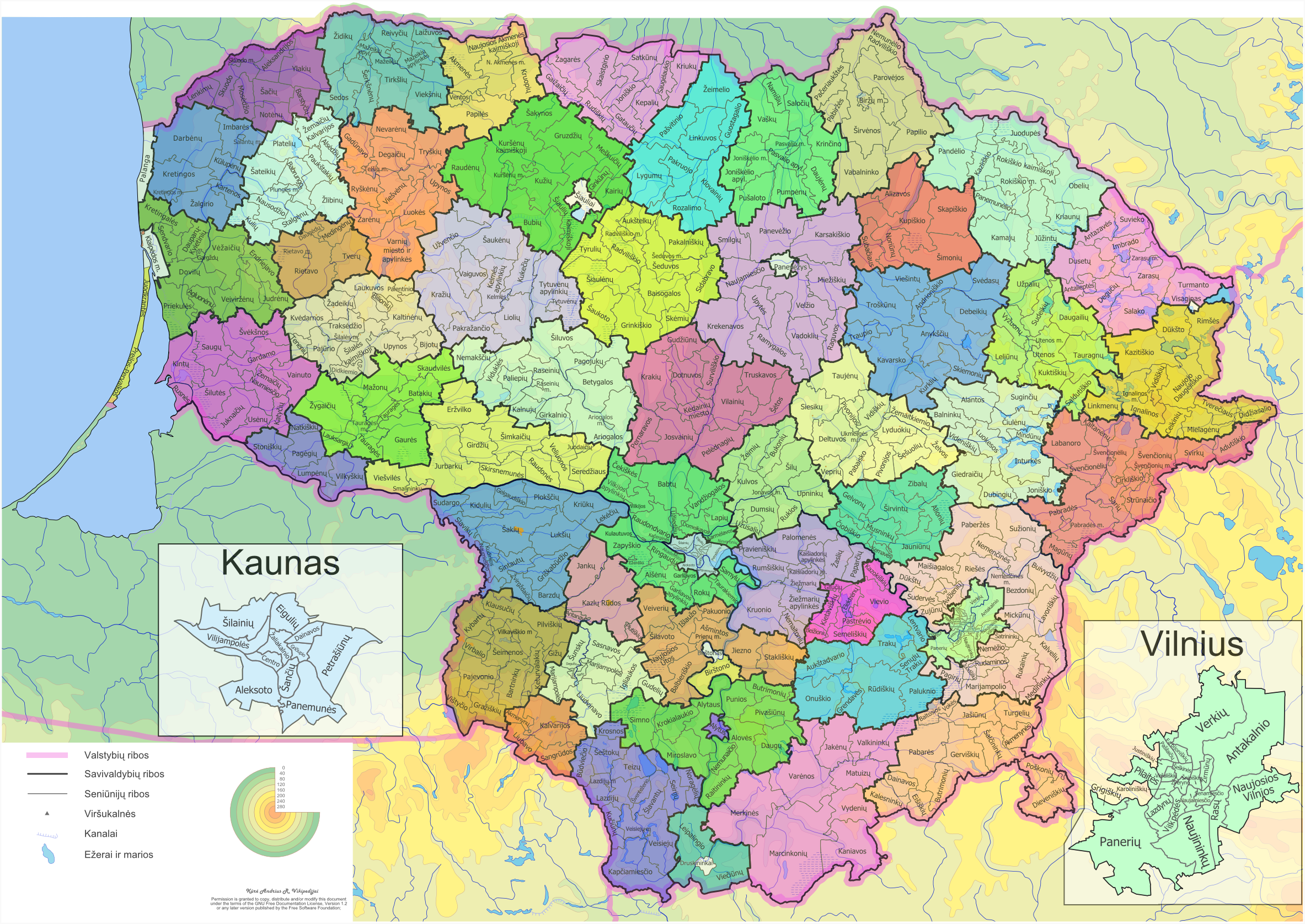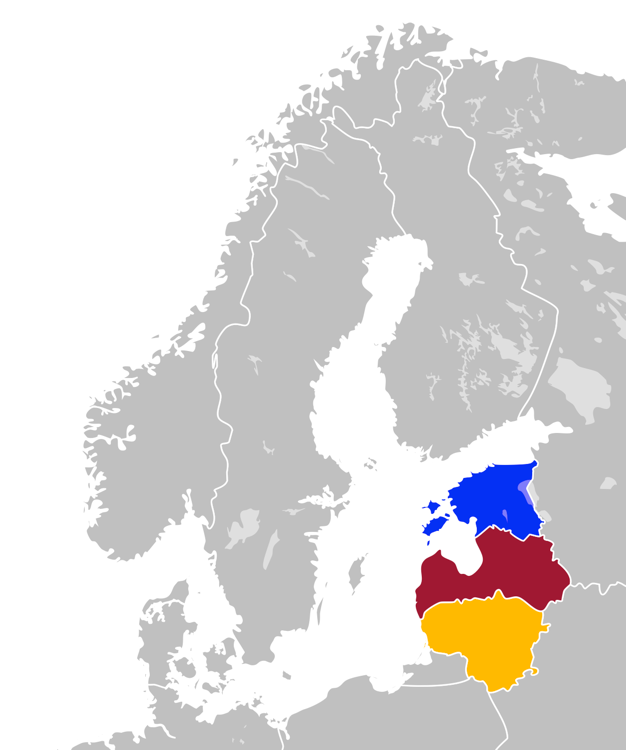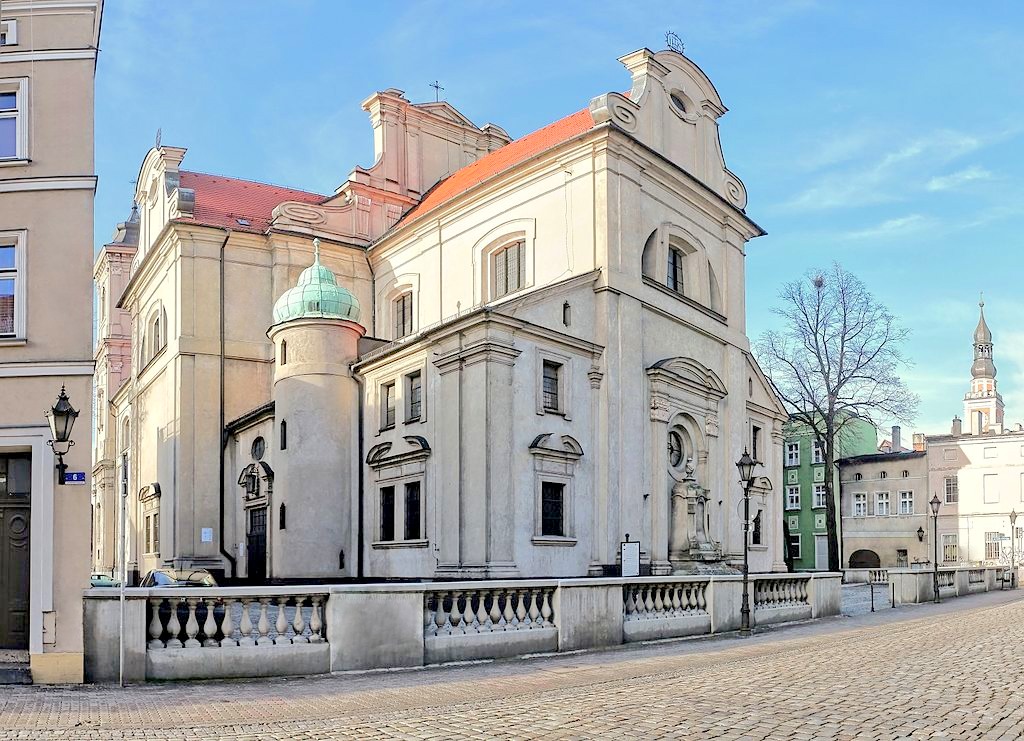|
Lazdynai Vilnius
:''"Lazdynai" is also an old name of Krasnoznamensk, Kaliningrad Oblast, Russia Lazdynai ( lt, Lazdynų seniūnija, Lazdynai) is an eldership of Vilnius, Lithuania, situated on the right bank of the Neris River. It covers a area of and has a population of 31,097 (according to the 2011 census). The word means "hazel bushes" in Lithuanian. History Since the 1950s, the Baltic states experienced fast population growth and faced housing shortages. When Soviet leader Nikita Khrushchev put forth his program of fast residential construction, based on prefabricated panel buildings dubbed ''khrushchovkas'', it threatened the integrity of the well-preserved historical style of Vilnius. A group of architects struggled against the intrusion of ''khrushchovkas'' into the historical city center. Eventually they were awarded with the project to build a satellite city outside Vilnius. The chosen area was close to a Polish village of Leszczyniaki or Lazdynai in Lithuanian, situated sou ... [...More Info...] [...Related Items...] OR: [Wikipedia] [Google] [Baidu] |
Elderships Of Lithuania
A ''seniūnija'' (in English: eldership, elderate, ward, parish, or subdistrict) is the smallest administrative division of Lithuania. An eldership may comprise a very small region consisting of few villages, one single town, or a part of a big city. Elderships vary in size and population depending on their location and nature. A few elderships make up a municipality. Šilainiai (Kaunas) and Dainava (Kaunas) are the most populous elderates, with population counts over , exceeding the population of some entire municipalities. Elderships manage small-scale local matters, such as repairing pavements and dirt roads, and keep records on all families living in the eldership. The premise of the concept is that - unlike in higher administrative divisions - an elder (the leader of the eldership) could have time to talk to every person in the eldership who wants to. Modern Lithuania is divided into 10 counties, 60 municipalities, and 546 elderships. Elderships function as munici ... [...More Info...] [...Related Items...] OR: [Wikipedia] [Google] [Baidu] |
Baltic States
The Baltic states, et, Balti riigid or the Baltic countries is a geopolitical term, which currently is used to group three countries: Estonia, Latvia, and Lithuania. All three countries are members of NATO, the European Union, the Eurozone, and the OECD. The three sovereign states on the eastern coast of the Baltic Sea are sometimes referred to as the "Baltic nations", less often and in historical circumstances also as the "Baltic republics", the "Baltic lands", or simply the Baltics. All three Baltic countries are classified as high-income economies by the World Bank and maintain a very high Human Development Index. The three governments engage in intergovernmental and parliamentary cooperation. There is also frequent cooperation in foreign and security policy, defence, energy, and transportation. The term "Baltic states" ("countries", "nations", or similar) cannot be used unambiguously in the context of cultural areas, national identity, or language. While the majori ... [...More Info...] [...Related Items...] OR: [Wikipedia] [Google] [Baidu] |
Vytautas Brėdikis
Vytautas (c. 135027 October 1430), also known as Vytautas the Great (Lithuanian: ', be, Вітаўт, ''Vitaŭt'', pl, Witold Kiejstutowicz, ''Witold Aleksander'' or ''Witold Wielki'' Ruthenian: ''Vitovt'', Latin: ''Alexander Vitoldus'', Old German: ''Wythaws or Wythawt'') from the late 14th century onwards, was a ruler of the Grand Duchy of Lithuania. He was also the Prince of Grodno (1370–1382), Prince of Lutsk (1387–1389), and the postulated king of the Hussites. In modern Lithuania, Vytautas is revered as a national hero and was an important figure in the national rebirth in the 19th century. ''Vytautas'' is a popular male given name in Lithuania. In commemoration of the 500-year anniversary of his death, Vytautas Magnus University was named after him. Monuments in his honour were built in many towns in the independent Lithuania during the interwar period from 1918 to 1939. It is known that Vytautas himself knew and spoke in the Lithuanian language with Jogaila. ... [...More Info...] [...Related Items...] OR: [Wikipedia] [Google] [Baidu] |
Vytautas Čekanauskas
Vytautas Edmundas Čekanauskas (13 May 1930, Šiauliai – 7 July 2010, Vilnius) was a Lithuanian architect, professor of the Vilnius Academy of Art. In 1974 he, together with colleagues, was awarded the Lenin Prize in architecture for the design of Lazdynai, a microdistrict of Vilnius. In 2000 he was awarded the Officer's Cross of the Order of the Lithuanian Grand Duke Gediminas. Works *Lazdynai :''"Lazdynai" is also an old name of Krasnoznamensk, Kaliningrad Oblast, Russia Lazdynai ( lt, Lazdynų seniūnija, Lazdynai) is an eldership of Vilnius, Lithuania, situated on the right bank of the Neris River. It covers a area of and has ... * Church of St. John Bosco, Vilnius *Building of the Government of Lithuania External links 1930 births 2010 deaths Burials at Antakalnis Cemetery People from Šiauliai Lithuanian architects Lenin Prize winners Officer's Crosses of the Order of the Lithuanian Grand Duke Gediminas Academic staff of the Vilnius Academy of ... [...More Info...] [...Related Items...] OR: [Wikipedia] [Google] [Baidu] |
Finland
Finland ( fi, Suomi ; sv, Finland ), officially the Republic of Finland (; ), is a Nordic country in Northern Europe. It shares land borders with Sweden to the northwest, Norway to the north, and Russia to the east, with the Gulf of Bothnia to the west and the Gulf of Finland across Estonia to the south. Finland covers an area of with a population of 5.6 million. Helsinki is the capital and largest city, forming a larger metropolitan area with the neighbouring cities of Espoo, Kauniainen, and Vantaa. The vast majority of the population are ethnic Finns. Finnish, alongside Swedish, are the official languages. Swedish is the native language of 5.2% of the population. Finland's climate varies from humid continental in the south to the boreal in the north. The land cover is primarily a boreal forest biome, with more than 180,000 recorded lakes. Finland was first inhabited around 9000 BC after the Last Glacial Period. The Stone Age introduced several different ... [...More Info...] [...Related Items...] OR: [Wikipedia] [Google] [Baidu] |
Leszno Voivodeship
Leszno Voivodeship () was a unit of administrative division and local government in Poland from 1975 to 1998, superseded by Greater Poland Voivodeship. Its capital city was Leszno. Major cities and towns (population in 1995) * Leszno (61,300) * Kościan (24,600) * Rawicz (21,500) * Gostyń (20,600) See also * Voivodeships of Poland A voivodeship (; pl, województwo ; plural: ) is the highest-level administrative division of Poland, corresponding to a province in many other countries. The term has been in use since the 14th century and is commonly translated into English as ... References Former administrative regions of Greater Poland Former voivodeships of Poland (1975–1998) {{poland-geo-stub ... [...More Info...] [...Related Items...] OR: [Wikipedia] [Google] [Baidu] |
Leszno
Leszno (german: Lissa, 1800–1918 ''Lissa in Posen'') is a historic city in western Poland, within the Greater Poland Voivodeship. It is the seventh-largest city in the province with an estimated population of 62,200, as of 2021. Previously, it was the capital of the Leszno Voivodeship (1975–1998) and is now the seat of Leszno County. History Early history The city's unrecorded history dates to the 13th century. It was first mentioned in historical documents in 1393, when the estate was the property of a noble named Stefan Karnin- Wieniawa. The family eventually adopted the name Leszczyński (literal meaning "of Leszno"), derived from the name of their estate, as was the custom among the Polish nobility. 16th–18th centuries In around 1516, a community of Protestants known as the Unity of the Brethren (''Unitas fratrum'') were expelled from the Bohemian lands by King Vladislaus II and settled in Leszno. They were invited by the Leszczyński family, imperial counts since ... [...More Info...] [...Related Items...] OR: [Wikipedia] [Google] [Baidu] |
Corylus Avellana
''Corylus avellana'', the common hazel, is a species of flowering plant in the birch family Betulaceae. It is native to Europe and western Asia. It is an important component of the hedgerows that were the traditional field boundaries in lowland England. The wood was traditionally grown as coppice, the poles cut being used for wattle-and-daub building and agricultural fencing. Common hazel is cultivated for its nuts. The name hazelnut applies to the nuts of any species in the genus ''Corylus'', but in commercial settings a hazelnut is usually that of ''C. avellana''. This hazelnut or cob nut, the kernel of the seed, is edible and used raw or roasted, or ground into a paste. The cob is round, compared with the longer filbert nut. Description Common hazel is typically a shrub reaching tall, but can reach . The leaves are deciduous, rounded, long and across, softly hairy on both surfaces, and with a double-serrate margin. The flowers are produced very early in spring, be ... [...More Info...] [...Related Items...] OR: [Wikipedia] [Google] [Baidu] |
Satellite City
Satellite cities or satellite towns are smaller municipalities that are adjacent to a principal city which is the core of a metropolitan area. They differ from mere suburbs, subdivisions and especially bedroom communities in that they have municipal governments distinct from that of the core metropolis and employment bases sufficient to support their residential populations. Conceptually, satellite cities could be self-sufficient communities outside of their larger metropolitan areas. However, functioning as part of a metropolis, a satellite city experiences cross-commuting (that is, residents commuting out of and employees commuting into the city). Satellite cities versus other types of settlement Satellite cities are different from and are sometimes confused with the following related patterns of development. Suburbs Satellite cities differ from suburbs in that they have distinct employment bases, commutersheds, and cultural offerings from the central metropolis, as w ... [...More Info...] [...Related Items...] OR: [Wikipedia] [Google] [Baidu] |
Khrushchovka
A ''khrushchevka'' ( rus, хрущёвка, khrushchëvka, p=xrʊˈɕːɵfkə), also known by the derogatory nickname ''khrushchoba'' ( rus, хрущоба, khrushchoba, t=khru-slum), is a type of low-cost, concrete-paneled or brick three- to five-storied apartment building which was developed in the Soviet Union during the early 1960s, during the time its namesake Nikita Khrushchev directed the Soviet government. Khrushchevkas are sometimes compared to the Japanese ''danchi'', similar (often government-sponsored) housing projects from the same period, which by some accounts were directly inspired by them. Preceding this type of housing, the majority of the Soviet housing stock was of low-rise communal apartments. An updated high rise version, the ''brezhnevka'', was built in the 1970s and 1980s and included many upgrades including larger apartments (particularly, larger kitchens), elevators, and garbage disposals. This was then followed by what is known unofficially as the '' ... [...More Info...] [...Related Items...] OR: [Wikipedia] [Google] [Baidu] |






